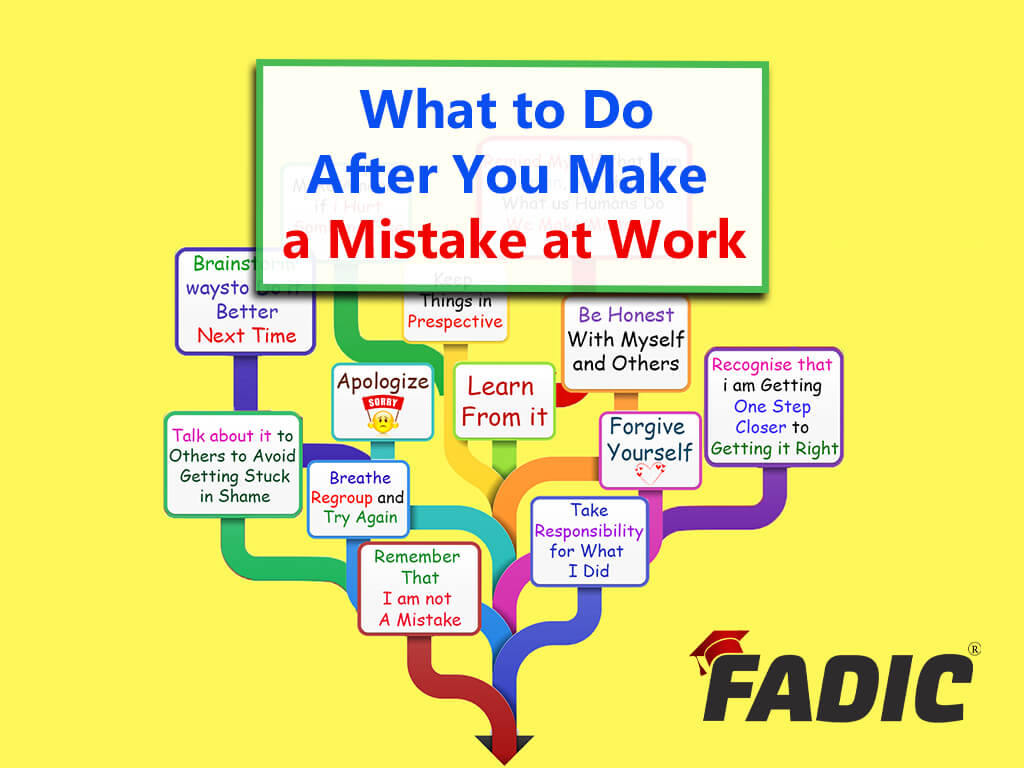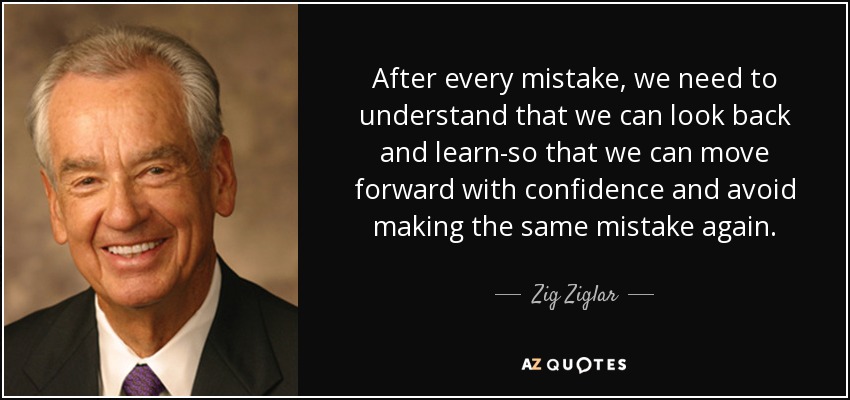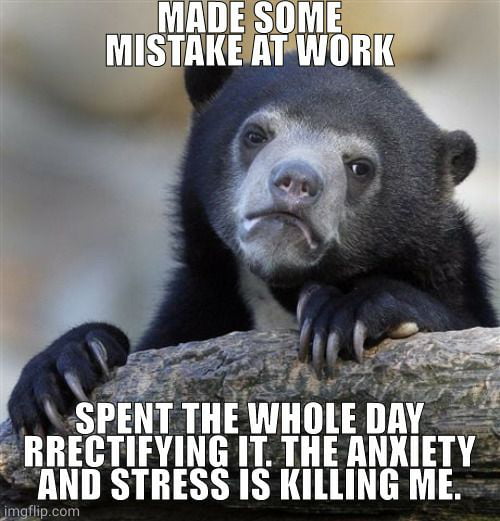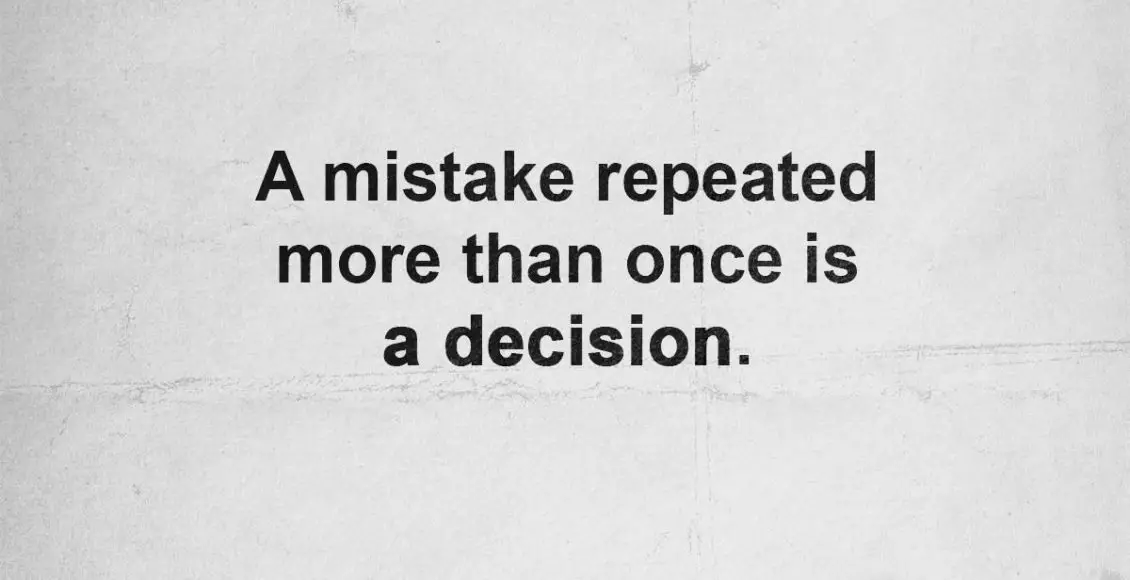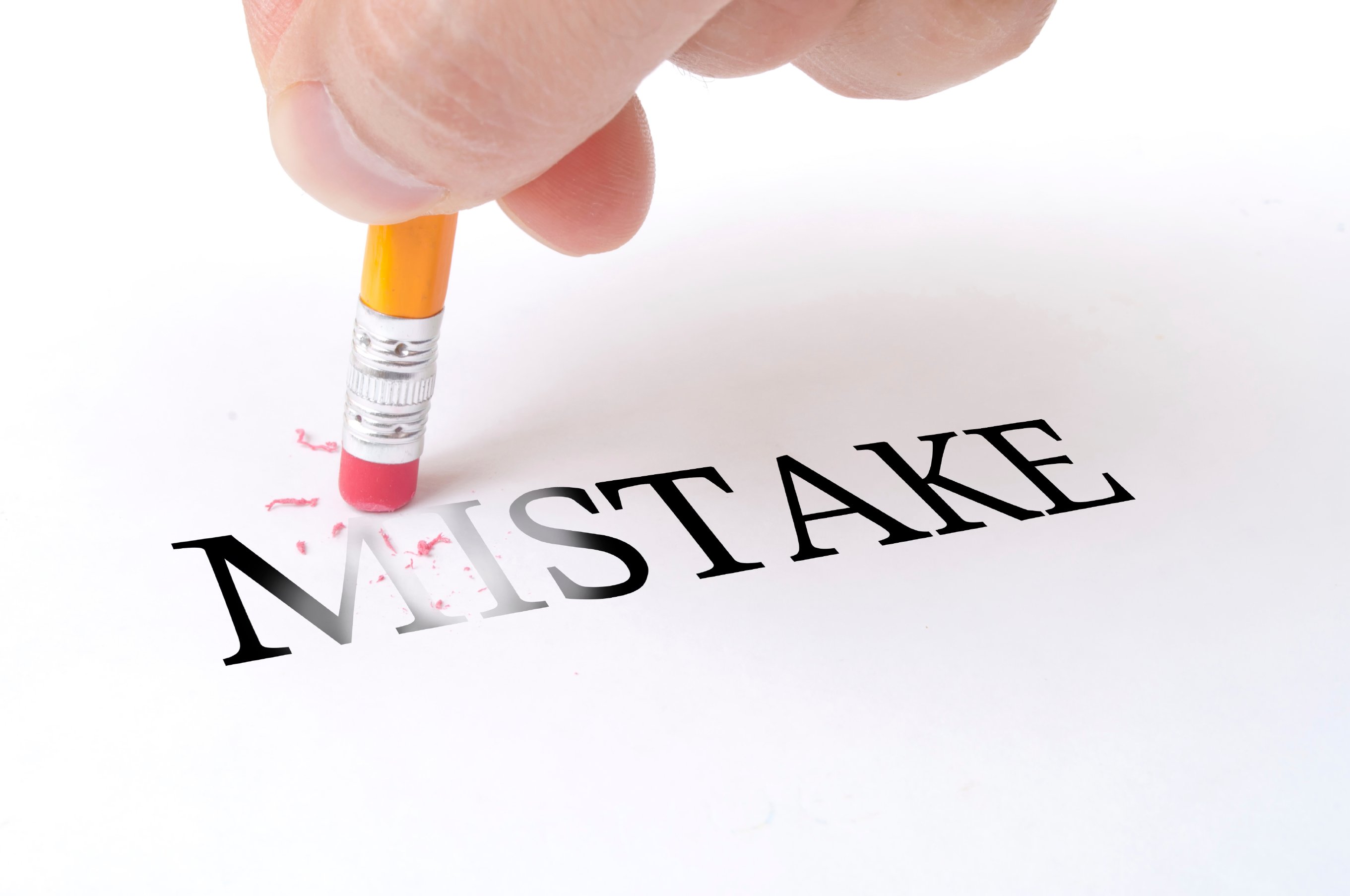I Keep Making The Same Mistakes At Work

The frustration is palpable. Despite best intentions and concerted efforts, many professionals find themselves trapped in a cycle of recurring errors at work. This isn't about isolated incidents; it's about the same mistakes cropping up repeatedly, hindering productivity, damaging morale, and potentially jeopardizing career advancement.
At the heart of this issue lies a complex interplay of factors, ranging from systemic organizational deficiencies to individual cognitive biases. Understanding these underlying causes is crucial for breaking the cycle and fostering a work environment where learning and improvement are prioritized. Ignoring the problem leads to decreased efficiency, increased stress, and ultimately, a decline in the overall quality of work.
Identifying the Root Causes
Often, the issue isn't a lack of skill, but a flawed system. Repetitive mistakes can be symptomatic of unclear processes, inadequate training, or a lack of sufficient resources. According to a 2023 study by the American Psychological Association, employees who feel inadequately trained are significantly more likely to experience errors at work.
Communication breakdowns also play a significant role. Ambiguous instructions, infrequent feedback, and a reluctance to ask questions can all contribute to misunderstandings and subsequent errors. A culture that discourages open communication and constructive criticism exacerbates the problem, preventing employees from learning from their mistakes.
Individual Factors and Cognitive Biases
Beyond systemic issues, individual cognitive biases can also contribute to repeated errors. Confirmation bias, for example, can lead individuals to selectively notice information that confirms their existing beliefs, even if those beliefs are incorrect. This can prevent them from recognizing and correcting their mistakes.
Stress and burnout significantly impair cognitive function. Research published in the Journal of Occupational Health Psychology consistently demonstrates a link between high stress levels and increased error rates. When overwhelmed, employees are more likely to make impulsive decisions, overlook important details, and struggle to maintain focus.
Procrastination, driven by fear of failure or perfectionism, can also lead to rushed work and increased errors. Individuals who delay tasks until the last minute often lack the time to thoroughly review their work, increasing the likelihood of mistakes.
Strategies for Breaking the Cycle
Addressing recurring errors requires a multi-pronged approach that tackles both systemic and individual factors. At the organizational level, implementing clear and standardized processes is paramount. This includes providing comprehensive training programs, establishing regular feedback mechanisms, and fostering a culture of open communication.
Regular process audits can help identify inefficiencies and bottlenecks that contribute to errors. These audits should involve input from employees at all levels, ensuring that processes are practical and user-friendly. Furthermore, leveraging technology to automate repetitive tasks can significantly reduce the risk of human error.
From an individual perspective, self-awareness is key. Actively seeking feedback from colleagues and supervisors can provide valuable insights into areas for improvement. Utilizing tools like checklists and flowcharts can help structure tasks and minimize the risk of overlooking crucial steps.
"The greatest mistake you can make in life is to be continually fearing you will make one." - Elbert Hubbard
Developing strategies for managing stress and burnout is also essential. This may involve practicing mindfulness techniques, prioritizing self-care, or seeking professional help. Building a supportive network of colleagues can provide a sense of camaraderie and reduce feelings of isolation.
The Role of Leadership
Leaders play a crucial role in creating a culture that supports learning and improvement. This includes fostering a blame-free environment where employees feel comfortable admitting mistakes and seeking help. Leaders should also prioritize employee well-being and provide opportunities for professional development.
Mentorship programs can provide valuable guidance and support for employees struggling with recurring errors. Mentors can offer practical advice, share their own experiences, and help mentees develop strategies for overcoming challenges. Recognizing and rewarding employees who demonstrate a commitment to continuous improvement reinforces the value of learning from mistakes.
Looking Ahead
Breaking the cycle of repeated errors at work is an ongoing process, requiring sustained effort and commitment from both individuals and organizations. By addressing the underlying causes, implementing effective strategies, and fostering a culture of learning, professionals can improve their performance, enhance their job satisfaction, and achieve their full potential. The key is to view mistakes not as failures, but as opportunities for growth and development.
Moving forward, organizations should invest in data analytics to identify patterns in errors and develop targeted interventions. This data-driven approach can help pinpoint areas where training is most needed and optimize processes to minimize the risk of future mistakes. Ultimately, a proactive and holistic approach is essential for creating a work environment where employees can thrive and excel.


![I Keep Making The Same Mistakes At Work [Infographic] I Made A Mistake At Work: The Do’s And Don'ts](https://www.niagarainstitute.com/hs-fs/hubfs/Niagara Institute - I Made A Mistake At Work Do’s And Donts Infographic (1).png?width=1480&height=2724&name=Niagara Institute - I Made A Mistake At Work Do’s And Donts Infographic (1).png)


